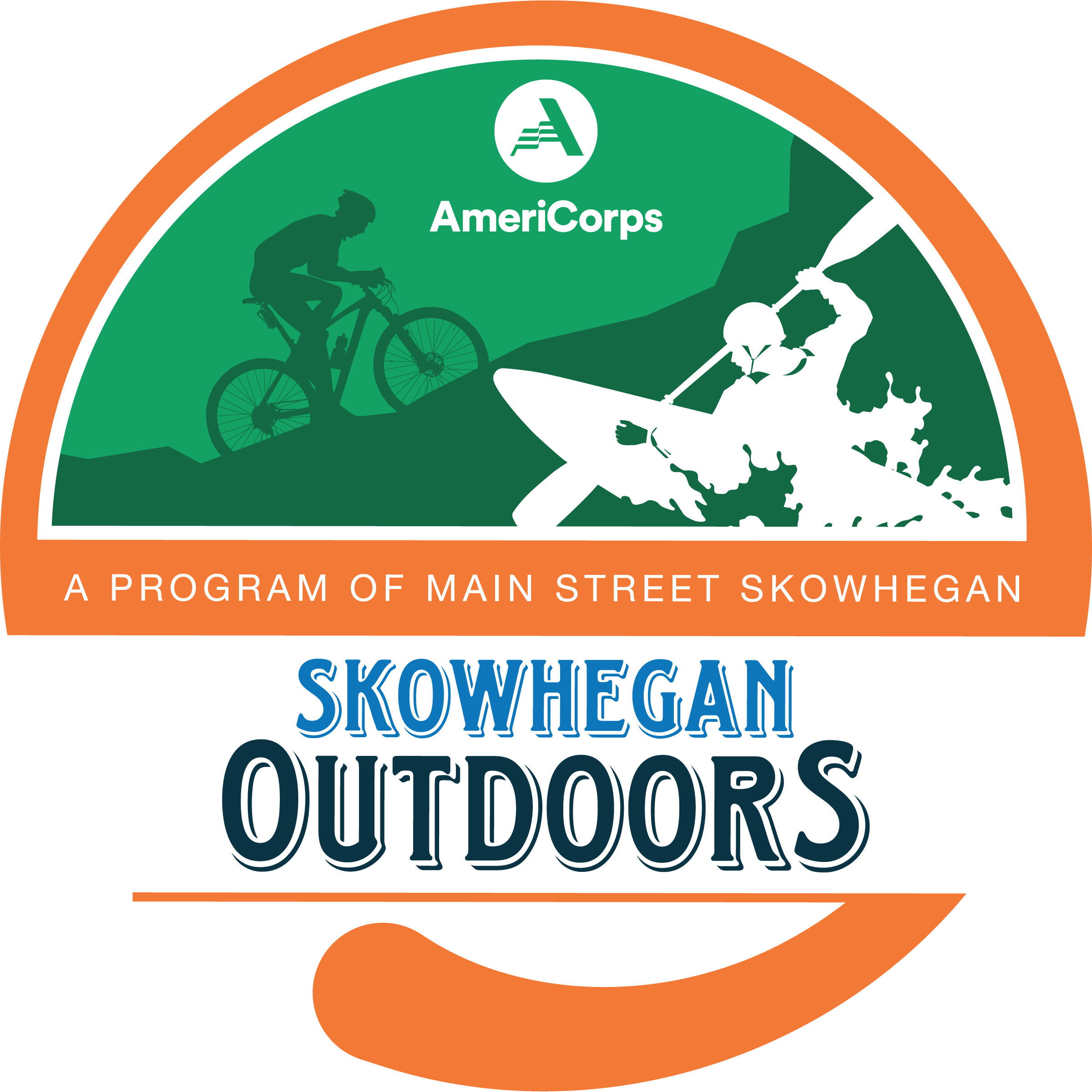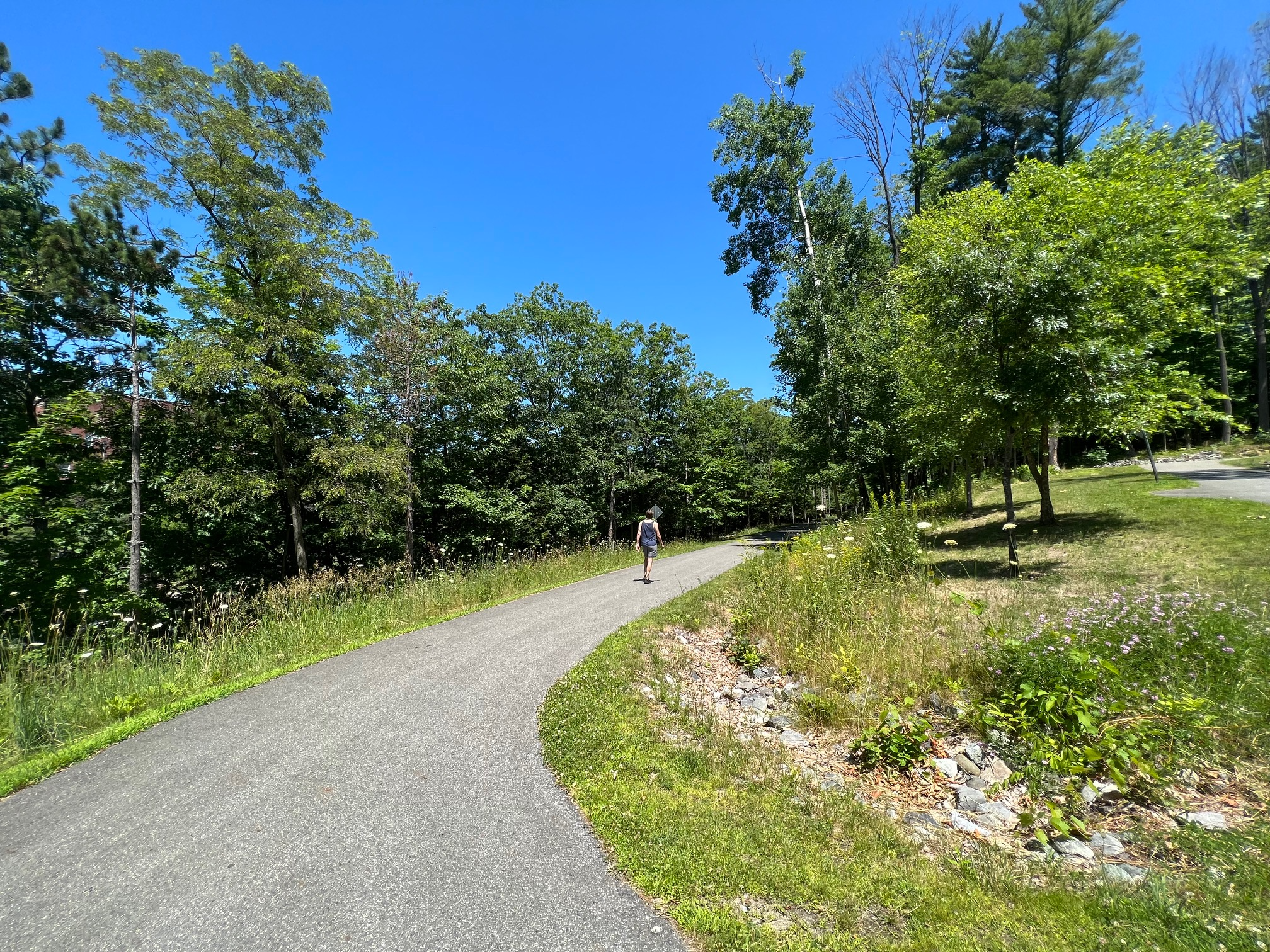Skowhegan is well on its way to becoming a prominent outdoor recreation community, supported by various regional organizations. A trails concept plan has been developed to propose over 60 miles of natural and active transportation trails in the area. This plan highlights priorities such as bike lanes, bike parks, hiking trails, and shared-use routes. Achieving this vision will necessitate time, dedication, and collaboration, ultimately enhancing the community for residents and visitors alike.
Skowhegan Area Trails Concept Plan - Overview

Project Background
Skowhegan is evolving into a vibrant outdoor recreation community, leveraging its natural resources and recreational assets. Main Street Skowhegan (MSS) recognizes this potential and has spearheaded the Skowhegan River Park project, raising over $7 million since 2020 for improved river access, a riverfront promenade, whitewater for kayaking and surfing, and an enhanced trail network—while also launching the Skowhegan Outdoors AmeriCorps Program to ensure equitable and access to the outdoors for community members.
While residents currently enjoy local trails, shifting recreation trends and demographics have highlighted the need for improved accessibility, planning, and maintenance. In 2022, MSS collaborated with the Outdoor Sport Institute (OSI) to create a comprehensive trail development concept plan for the greater Skowhegan area, with the goal of improving current trails and adding new trails for the benefit of the community.
WHY TRAILS?
Health and Wellness
Outdoor recreation and trail use offer numerous health benefits, including improved physical fitness and mental well-being. Activities like hiking, trail running, cross-country skiing, snowshoeing, and mountain biking provide aerobic and strength training advantages. Access to walking and biking infrastructure is crucial, as it directly influences how often people engage in outdoor activities, making them more likely to exercise when facilities are nearby.
With rising health issues such as obesity and heart disease, particularly among children, finding enjoyable ways to encourage physical activity is essential. Movement is vital for healthy aging, and outdoor sports provide holistic workouts that enhance balance, coordination, and flexibility.
Moreover, spending time in nature positively impacts mental health by reducing stress and enhancing mood. Physical activity releases hormones that alleviate anger and anxiety, while exposure to fresh air and sunlight offers additional benefits, especially for those who often remain indoors.
Community Growth
Involving the community in the planning, building, maintaining, and programming of trails fosters pride and connection among residents. Volunteering for trail work allows individuals to bond with each other and engage with their local landscape. Trails and parks create informal settings for social interaction, promoting shared interests and community ties.
Connection to nature is crucial for environmental health and ensuring the outdoors remains relevant and accessible. Trails cater to a diverse population, encouraging unity and stewardship. They can also revitalize neglected areas, transforming sites like landfills into bike parks or trailheads.
Overall, trails enhance community living by preserving and creating open spaces for socialization and recreation. Conserved land serves as a practical environmental classroom for all ages, offering direct nature experiences while also protecting water quality, reducing soil erosion, and boosting biodiversity, which are vital for resilient communities.
Economic Growth
A well-designed trail system can drive economic growth by creating local opportunities and attracting visitors, thereby boosting retail sales, services, and hospitality. This can lead to job creation, provide sustainable options for rural communities, and generate tax revenue.
Access to trails enhances the quality of life, making communities more appealing to potential businesses, residents, and workers. Additionally, property values tend to increase near parks, open spaces, and trails, as buyers often pay a premium for such locations. Healthier populations also translate to lower healthcare costs, further contributing to economic growth.

PROCESS
The Skowhegan Trails Plan is a collaborative effort that incorporates input from various partners, facilitated by the Outdoor Sport Institute (OSI) and Main Street Skowhegan (MSS). The project consisted of four main tasks: background research, stakeholder engagement, fieldwork, and reporting. MSS and OSI first defined broad goals, identified stakeholders, and pinpointed areas of interest.
To ensure comprehensive community representation, MSS and OSI engaged a diverse range of stakeholders, including landowners and the public. OSI conducted a geospatial information systems (GIS) analysis of open and conserved spaces in Skowhegan to identify areas of interest and guide stakeholder inclusion.
Engagement activities included initial in-person meetings to establish relationships and discuss project processes, followed by video calls for updates on field findings and to gather feedback. OSI also facilitated a trail user group meeting and two public input sessions.
In addition to GIS analysis, OSI researched environmental and hydrologic resources, permitting and compliance constraints, topography, soils, and existing trails. This data-driven approach informed the feasibility of contemporary trail development, aligning with community needs and goals, and resulting in a more focused plan.
Our Partners
- Central Maine New England Mountain Bike Association (CEMENEMBA)
- Lake George Regional Park
- Maine Appalachian Trail Club
- Maine Water Company
- Move More Kids & Somerset Public Health
- Maine School Administrative District #54
- New Balance Foundation
- University of Maine Cooperative Extension
- Somerset County Soil & Water Conservation District
- Somerset Woods Trustees
- Skowhegan Parks & Recreation Department
- Skowhegan Sno-Hawks Snowmobile Club
- Skowhegan Stump Jumpers ATV Club
PROJECT GOALS
The Skowhegan Trails Plan outlines broad goals to guide ongoing collaboration among partners and the community in implementing trail development.
Key Goals:
Connect Trail Systems and Downtown
- Prioritizing connectivity allows residents to access various recreational options and supports car-free travel. The plan aims to create a hub in downtown Skowhegan that links to miles of surrounding trails, improving access for residents, especially those in denser urban areas.
Improve Accessibility and New User Experiences
- Existing trails often present challenges due to lack of signage and primitive construction. The plan advocates for the creation of more welcoming and accessible trails to accommodate a broader range of users, including those with mobility challenges.
Diversify Experiences to Attract New Support
- The current trails primarily cater to pedestrians. The plan suggests developing shared-use trails for activities like mountain biking, equestrian riding, and skiing, which would provide varied experiences and attract more users.
Focus on Trail Opportunities for Youth
- Increasing trail accessibility and diversity is crucial for creating youth-friendly environments. The plan aims to engage children with various trail types, promoting outdoor activity and building confidence through activities like mountain biking.
Increase Mileage to Create a Regional Destination
- A goal of 50 miles of trail is set to elevate Skowhegan from a community resource to a regional destination. The plan outlines nearly 64 miles of trails, including improvements to existing routes and the creation of new ones, to attract visitors from surrounding areas.
Overall, the plan emphasizes collaboration, accessibility, and diversity in trail experiences to foster community engagement, enhance quality of life, and position Skowhegan as an outdoor recreation destination.
TRAIL PLANNING AND DESIGN CONSIDERATIONS

For more information, please review Appendix D: Common Terms, Appendix E: Trail Development Lifecycle, Appendix F: Sustainable and Maintainable Trail Basics, Appendix G: Trail Development Best Practices, and Appendix H: Additional Resources.
Trail planning and design is a holistic and iterative process. Knowledge of land management, forestry, soil science, ecology, hydrology, construction, and recreation management are needed to make reasonable recommendations for trail planning and design. The following key ideas are important to consider as one plans and designs trails. It is recommended a qualified trail designer assist the partners with the next steps of this project.
IMPLEMENTATION AND NEXT STEPS
The following next steps are important to a successful trail project. While the planning process has helped solidify a vision for the partners and community, a project of this size and complexity requires more in-depth fieldwork, meetings, and design before moving to construction. Trail maintenance and stewardship will be a perpetual need once trails are improved or built. The narratives below are intended to help the partners understand the upcoming stages of trail development.

